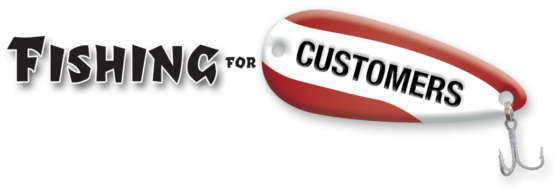As the American continent was settled, pioneers took with them the things they couldn’t do without. Those things they could do without, they did without. This provided an opportunity for the first peddlers.
A peddler would load up a Conestoga wagon with anvils and thimbles; frying pans and print fabrics; hammers and saws; gunpowder and fishhooks and filleting knives; coffee and sugar and salt. He’d then pull his rig up in the center of the new community and start banging a drum to get the attention of the pioneers. (This is the origin of the nearly obsolite term “drummer” to mean traveling salesman).
Since there was an existing demand for nearly everything the pioneers had left behind, these early peddlers could sell nearly everything in their wagons, quickly, at a profit.
As distribution improved, the general store became the more permanent variant of the Yankee peddler, the drummer, the traveling salesman. The outgrowth of the general store was the department store.
The one constant was demand. Demand for nearly everything. Until distribution became cheap and easy, goods would continue to be in short supply. When a manufacturer could find a peddler, or a store, or a department store to stock his goods, the market would find, and purchase, those goods.
But that hasn’t been the case in quite some time, has it?
Distribution is no longer an issue. Now, we have choices. Limitless choices. With the maturation of the Internet, shoppers literally have the world available at their fingertips.
This amazing proliferation of choices is a result of, well, choice. Choice forces more choice through the process of division.
Take a single item, or service, say dining. Originally there were inns or roadhouses. Places where a traveler could buy a meal, a libation, or a night’s lodging. Then the process of division set in to create categories.
Roadhouses divided into hotels and restaurants. Hotels divided into hotels, motels, campgrounds, and RV parks. Restaurants divided into fine dining, family restaurants, and fast food.
Fast food became Mexican, Italian, Chinese, and burgers.
The marketing of burgers has split into restaurants appealing to children (McDonalds Happy Meal and playgrounds), to adults (Have it your way at Burger King), to people with big appetites (Hardees and the Monster Thickburger), to people looking for value (The $6 burger for only $3.95 at Carl’s Jr.).
The burger wars have even spilled out of fast food and over to TGI Fridays and their Meyer Natural Angus (TM) Hamburger – targeted at people willing to pay extra for quality.
How long can this division process go on? As long as more suppliers want to get into the game.
In fact, it must go on.
Each division in turn becomes a separate category, which invites more division. Each division offers the consumer more choices. If we’re to convince shoppers to choose our products (or services) when they could choose literally anybody’s, we must differentiate our products (or services) from all of the others.
This is contrary to what most people consider common sense. It appears logical that if McDonalds has the biggest percentage of hamburger sales, that taking a couple of percentage points from McDonalds could make a small company rich. We’ll just do what McDonalds does. Unfortunately, without differentiation, those percentage points simply aren’t available.
As a consumer in the mood for a burger, would you choose a quarter pounder with cheese from McDonalds, or a comparable sandwich from the new ABC Burgers – a company you’ve never heard of?
For that matter, would you choose ABC Burgers, or Burger King? Hardees? Carl’s Jr? Rally/Checkers? Business nearly always goes to the better known company.
That is, unless we can come up with an excellent reason for you to choose ABC Burgers.
I promise that reason won’t be “We’re just like McDonalds.”
It helps to get inside the consumers’ minds and understand that every decision carries the risk of being the wrong decision. Consumers minimize that risk by trusting that their previous experiences will be repeated. Indeed, companies like McDonalds, and Burger King, and Hardees go to great lengths to insure that the burger they purchase in Bismarck will taste exactly like the burger they purchase in London.
A consumer might buy an ABC Burger instead of McDonalds quarter pounder if it were bigger, or less expensive, or was grilled over mesquite, or used three different cheeses, or was garnished with ABC’s proprietary barbecue sauce, or if they offered a money back guarantee that you’d love their burger.
All of these reasons are examples of differences.
In order to persuade anyone to purchase an ABC Burger, we’ll have to come up with an excellent reason to buy one. And choosing among multiple options always comes down to differentiation.
I presume you want to persuade people to buy from you. Does your company exist among multiple competitors? Then, we’ll have to come up with an excellent reason to persuade those people.
Choosing among multiple options always comes down to differentiation.
What makes your company different?
*Differentiate or Die, Survival in Our Era of Killer Competition is an excellent book on this topic by Jack Trout. I recommend it highly.
